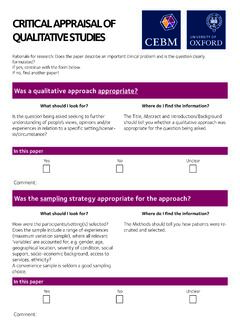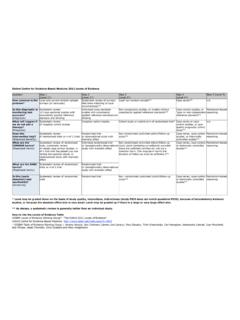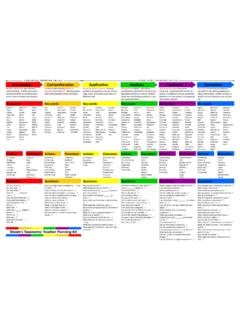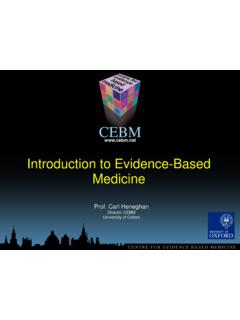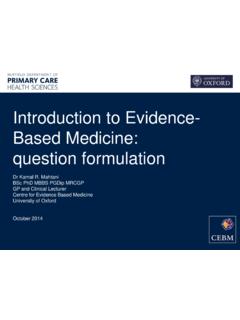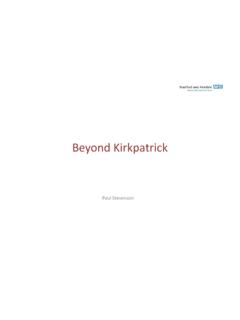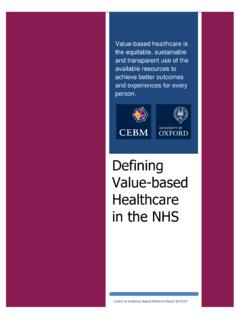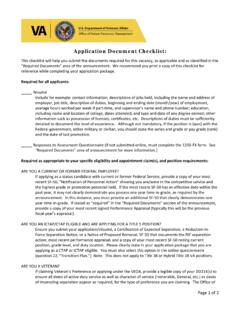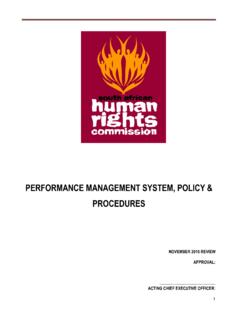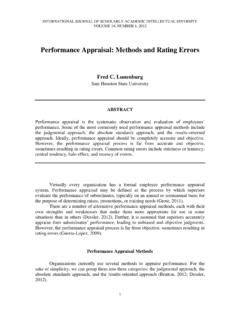Transcription of Critical appraisal of randomised controlled trials
1 Critical appraisal of randomised controlled trialsNik BobrovitzBHSc, MSc DPhil Student Nuffield Department of Primary Care Health SciencesMember of the Centre for Evidence Based MedicineUniversity of Oxford October 20163 steps to appraising an RCT that addresses your clinical risk of bias and determine if results are trustworthy if the effectis significant and generalizableA&E clinical scenario 3 days of fever, sore throat, and headacheNeck stiffness, photophobia, confusionElevated CRP and white blood count What is the Diagnosis?
2 What is your next test?Cloudy; 30% of blood glucose; raised protein & white cell countShould we start this patient on steroids to improve clinical outcomes?Clinical question? (PICO) 22 year old female Bacterial meningitis 3 days of fever, sore throat, headache, neck stiffness, photophobia, confusion CSF: cloudy; 30% of blood glucose; raised protein and white cell count Should we start steroid treatment to improve clinical outcomes?(PICO) Population: In adults with acute bacterial Intervention: does treatment with Comparison: compared to no Outcome: reduce the likelihood of poor outcome?
3 What kind of evidence do we want?Levels of evidence for testing effectiveness of a therapy/treatmentWhat is a randomized controlled trial? A study in which participants are randomly allocated to an experimental or comparison group Experimental group get an intervention The comparison group gets something different (no intervention, a placebo, different intervention) Outcomes in each group are compared to determine the effectof the intervention What s so special about RCTs?Randomisation = equalgroups Only difference should be the intervention Infer causality: can attribute differences in outcomes to the differences in the treatment No steroidSteroid1.
4 Find an RCT that addresses your clinical question 1. Find an RCT that addresses your clinical question High proportion of Meningitis in Asia (and the study) due to Streptococcus suis S. suisnot a common cause of meningitis in high-income countries Different standard of care 1. Find an RCT that addresses your clinical question Population: Age 17 years or older; suspected meningitis; cloudy CSF, bacteria on Gram staining OR leukocyte >1000 per mm3;Netherlands, Belgium, Germany, Austria, Denmark Intervention: Dexamethasone (10mg) every 6 hours for 4 days (first dose with or before antibiotics) Comparison: Placebo Primary Outcome: Glasgow outcome scale 2.
5 Assess the risk of bias and decide if the results are trustworthyValidity Internal validity: the extent to which the study is free from bias Bias: systematic differences between groups Sicker patients in one group Bias can be introduced because of the design, conduct, or analysis of studies Low risk of bias: we can attribute differences in outcomes to the differences in the treatment given and not other variables (confounding) Internal Validity If a study is internally valid we then assess the study s external validity generalizability External validity: the extent to which the results apply outside the study setting Can you use the results in your situation?
6 Assess whether your patients/setting are similar enough to those in the study Chapter 8 Rapid risk of bias the method of randomization truly random? allocation adequately concealed? groups comparable at the start? patients and practitioners providing care blinded? outcome assessment blinded or were outcomes objective? there minimal loss to follow-up & losses explained? an intention-to-treat analysis conducted? Think about how the bias could affect the outcome Will it make the intervention seem more or less beneficial?
7 Will it have a big impact or little impact on the effect estimates? Selection bias Systematic differences between baseline characteristics of the groups Want comparable groups at the start sequence allocation A. Generation of an unpredictable allocation sequenceB. Adequate allocation concealment Patients and investigators enrolling patients shouldn t know which group the next patient is going to; can t know the sequence Biased if participant s decision to provide consent or a recruiter s decision to enrol a participant is influenced by knowledge of which group a patient would be in if they participatedB.
8 Adequate allocation concealmentBest Central telephone/computerDoubtfulThings that can be tampered with (numbered, opaque, sealed envelopes)Allocation concealment impacts results Allocation concealment impacts results ORDexamethasone, n=157 Placebo, n=144A. Method of randomisation? B. Adequate allocation concealment? C. Were groups comparable at the start? Table 1: Baseline characteristicsBlock randomisationattempts to ensure equal group sizes performance bias Systematic differences in how patients are treatedand in how patients behave during a study (other than the intervention) Goal is equal treatment/behaviour other than the interventionD.
9 Were patients and practitioners providing care blinded? Blinding impacts the resultsD. Were patients and practitioners providing care blinded? performance bias Other differences in treatment? Detection bias Systematic differences in how outcomes are determined? Goal: outcomes assessed the same way for both groups E. Was outcome assessment blinded or were outcomes objective Objective: cannot be influenced by investigators judgment Death, preterm birth, etc. Were outcome assessments blinded?
10 Other outcome considerations Relevant for patients? Valid and reliable? Sample size calculation: was the study powered to detect a difference?Outcomes Primary outcome Glasgow Outcome Score 1 -4 eight weeks after randomisation (unfavourable outcome) 1: death, 2: vegetative state, 3: severe disability, 4: moderate disability Secondary outcomes Death Focal neurological abnormalities Hearing loss (audiologicexamination) GI bleed Fungal infection Herpes zoster HyperglycaemiaSample size calculationWas there a sample size calculation?
